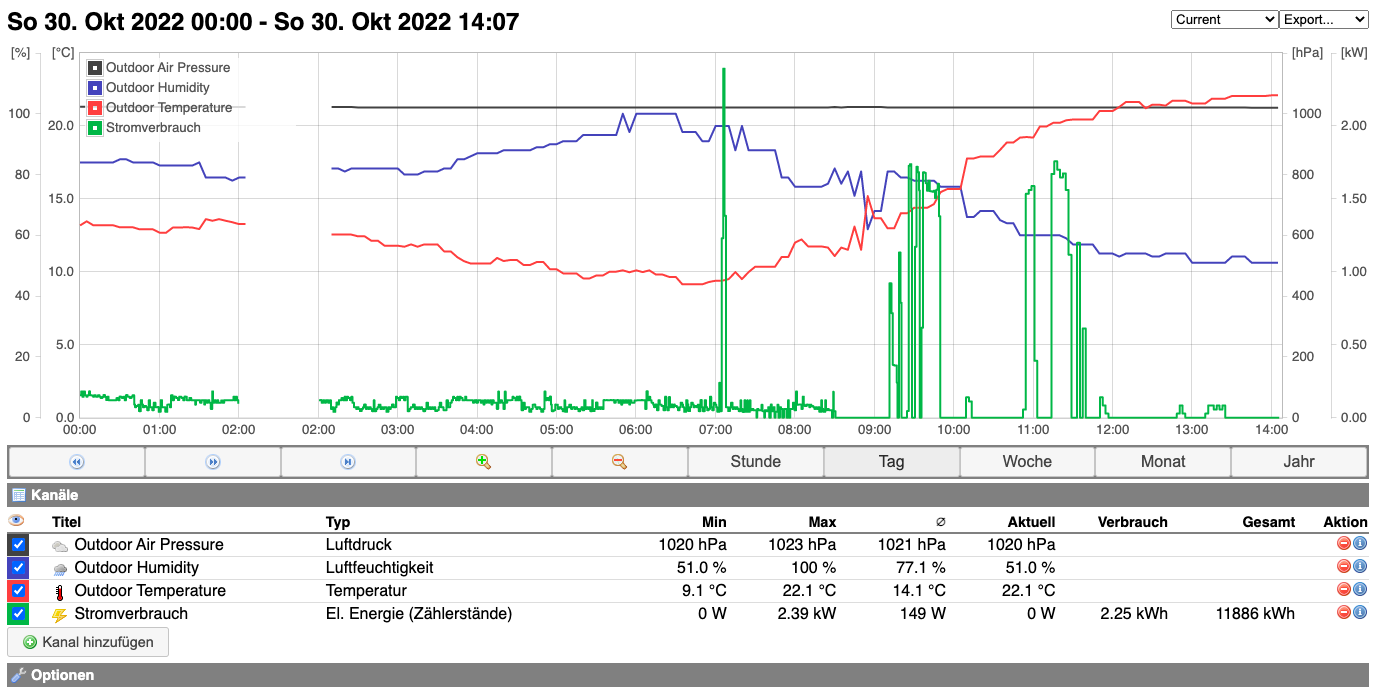After a lot of research, thinking, confusion, finding out how much weight our garage roof can take, looking at a local subsidy scheme, finding out said scheme had run out of funding for the year, we finally took the plunge and ordered an (almost) all-in-one plugin-in-solar kit for flat-roof mounting to generate up to the maximum-allowed 600W.
The first challenge is to get your head around the fact that you can just plug in a power generation source into a socket, and that everything will be just fine. That really is fine. One important thing is that the part (the inverter, see below) that puts out the 230V will only do that when it itself see's power on the power socket side. If it didn't do this, you would have high voltage AV on the plug when it's not plugged in, and that would be a problem.
The next challenge is to understand what parts you need and how to mount them. The popular option is to hang panels from your balcony. If I'm honest, I still don't really know how that works parts-wise. Fortunately there are kits, and the mounting principle for flat roofs is very simple. Even then though you have to figure out which electrical parts you need. This bit by now I do understand, though you need to be careful that you have the right number of inputs on the invert (see below) for the panels you have bought.
So, fortunately we had the almost all-in-one kit. The only part you had to organise yourself was concrete slabs to weigh the panels down. The number you need depends on the surface and the area of the country you live in. The kit (from yuma.de, which I can highly recommend), contains the two twin-panels, 20° stands for each which include the rubbery stands to place e.g. concrete slabs on top of to stop them moving in the wind. The electrical parts are also important: a 600W inverter (Solar DC to Mains voltage) and a long thick cable to plug in into the wall socket.
We had bought the kit that has a maximum solar power of 730W. This should mean that we can generate the full 600W even under less than ideal sun conditions.
The limit of 600W is a German thing, I think the EU general limit is 800W. This being Germany, there is a bit of paperwork too, but Yuma do their best to help with this, providing filled out versions. The only thing you have to do from scratch is the registration in the German "Marktstammregister" online which is just a lot of online web form filling.
As I have understood it, the point at the end of the day is that 600W is the maximum you can generate without needing to have it metered and be subject to the full German bureaucracy of power generation. Assuming you have a meter that doesn't roll backwards (and the electricity company will replace it if you do) the effect will be to bring your power usage down to a minimum of 0W - you will feed power into the grid at some point, but you won't know how much or get paid for it.
Here is a picture of the full setup on top of the roof:

The worst part was getting the gigantic panels up there!
Even at this end of the year (last weekend - so end of October) you could see a big difference (see photo below, from about 8:30am onwards). Suddenly we have periods where our electricity usage goes down to 0W, even though there is still stuff on. It'll get really interesting next Spring/Summer.

Of course, just because there is no official metering happening, it would still be nice to know how much we are generating (which, if you think it through, is not the same as measuring how much you are feeding back to the grid - all three measurements would be interesting in fact...). The inverter manufacturer offer a USB dongle and proprietary cloud system for this. The dongle is expensive and I'd like to have control of the data/feed it into the same system as our electricity meter ("Volkszaehler" - see this other post). Fortunately, some people have already figured out how to do it with an Arduino, and I've just discovered that Powerline ethernet can reach our garage (separate from the main building) so the next project is already underway...
For German readers: I can also recommend the website MuenchenSolar2030 - their online seminar helped me understand the whole thing, they place their materials online and have a list of suppliers which led me to Yuma. You can also email them for help and they answer.